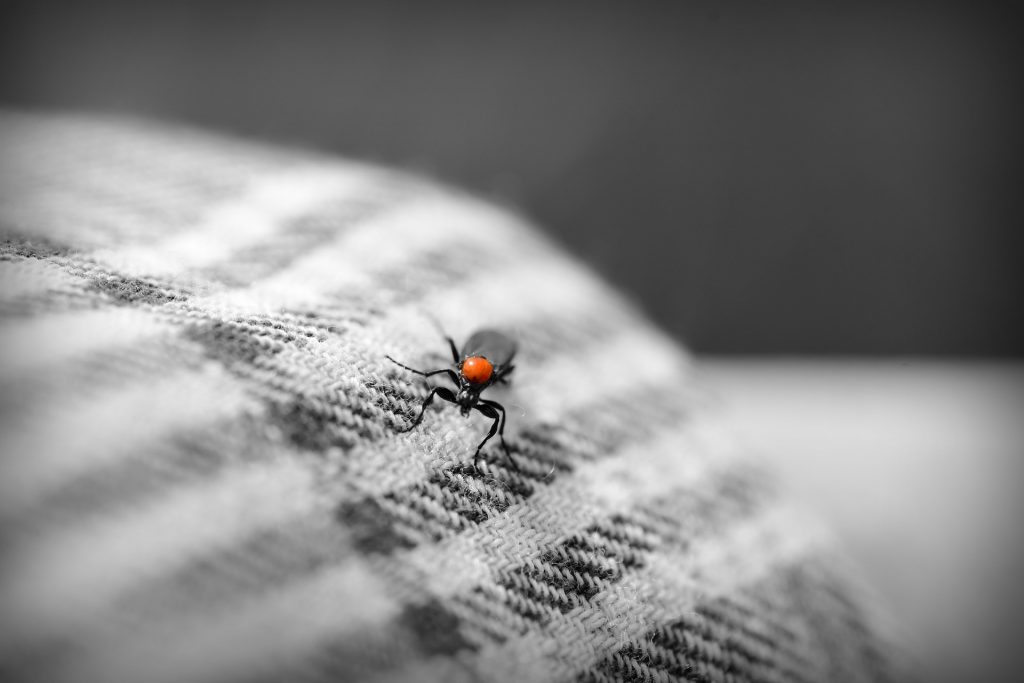Carpet beetles, moths, and silverfish can be destructive household pests. The following guide will help you recognize what they look like, understand their habits and where they live and control them, and ultimately destroy them.
Carpet Beetles
The carpet beetle larvae avoid light and actively feed in dark places like ceiling voids, crevices, folds, and wardrobes, or within upholstered furniture. The larvae develop through a series of molts, and as they shed their skins, the empty, hairy skin castings can be seen as one of the first signs of infestation. Carpet beetle bites can destroy fabrics, clothing, and fabrics that contain cotton, wool, silk, hair, fur, or feathers. They can rarely attack synthetic items, but blends of synthetic and natural fibers can be sometimes damaged.
Usually, their natural habitats are the nests of birds, rodents, insects, and spiders. The adult beetles are often pollen feeders and can be found in large numbers in flowers. They can be negligently brought into the house in cut flowers and laundry and are capable of flight.
Clothes Moths
Damage to fabrics and materials is caused predominantly by the moth larvae, also known as grubs, as the adult moths do not feed. The tiny white larvae eat holes through sensitive materials, and damaged fabrics sometimes have silken cases or threads on their surface.
Clothes moths mainly feed on natural products such as cotton, silk, wool, feathers, fur, hair, leather, and upholstered furniture. They also feed on materials like lint, dust, and paper products. Moreover, they can feed on mixtures of natural and synthetic fibers but cannot feed on materials made only from synthetic fibers. Naturally, clothes moths infest pollen, hair, dead insects, and dried animal remains.
The most usual types of clothes moths are the webbing clothes moth and the case-making clothes moth. The webbing clothes moth larvae are small white grubs and can be rarely seen. Case-making clothes moth larvae have a silken tube, also called ‘case’ for protection, and they drag this along as they feed. They’re mostly noticed when attached to walls or dragging themselves across smooth floor surfaces.
Silverfish
Silverfish cause damage by eating foods or other high protein, sugar, or starch materials. Moreover, they can even eat oats and wheat flour, and even damage paper, especially the one that contains glue or paste such as wallpaper and book bindings. Silverfish can also damage clothes, carpets, artwork, and curtain materials containing natural fibers such as wool, cotton, paper, silk, and rayon fabrics.
Silverfish usually work at night and are not often seen by day. They typically live and develop in dark and cold places, especially bathrooms and basements. Large numbers can be found in new buildings in which the masonry is still damp.
Since silverfish needs and seeks moisture, they are most commonly found in sinks and bathtubs. They can also be found in bookcases, closet shelves, behind skirting boards, and window and door frames. They are frequently brought into the homes in cardboard cartons, books, and papers from infested sites.
Control Methods
The most likely places you’ll find damaged are wool or wool-blend carpet areas, behind and under specific pieces of furniture, and where the carpet extends into wardrobes. Make sure you vacuum and regularly clean and inspect these areas.
Clean woolen clothing, furs, or blankets that are to be stored between seasons and place them in sealed plastic bags. To deter these pests in storage areas, consider using camphor, mothballs, or pest strips. In case you have an issue with it, you can protect pianos by hanging cloth bags of mothballs or camphor inside the instrument and renew them when they cease to evaporate
You can use commercially available surface-spray in cans that are specifically designed to treat surfaces and assist in the control of infestations. They have a limited residual effect and can only provide control for about 20 days. Still, consider spraying the areas where the insects are most commonly seen. These pests rest or hide in tight cracks or crevices, so spray small amounts of insecticide into any crevices formed by shelving, loose moldings, or floor tiles. You should spray around door and window openings, shelves, bookcases, closets, and the places where pipes are going through the walls.
Final Words
Another option to try is wettable insecticidal powders available for residual control of up to three weeks. The effect of this may not be immediate, since hiding insects must come into contact with the spray residue. Still, consider waiting for about two weeks before you decide whether or not the pests have been controlled.
If the pests are still evident, we would recommend repeating the spray treatment. These sprays can be applied indoors to similar areas we mentioned for the surface sprays. Make sure you always follow label instructions and do not use them on or near food or food preparation surfaces.
Follow Home Inside for more!
